
WEEDS FOR WELLNESS – DANDELION
 Finally the bright yellow flowers are brightening the landscape – a sure sign that spring is here to stay.
Finally the bright yellow flowers are brightening the landscape – a sure sign that spring is here to stay.
Hard to believe that herbalists have great appreciation for this marvelous creation of nature? We use flowers, buds, leaves and roots as food and medicine. My grand kids nibble on the flowers and young leaves.
Last year I made a crown out of Dandelion flowers for my then 4 year old grand daughter. She was wearing it proudly as we walked into Canadian Tire. With great joy I observed the reactions of customers especially when we were wandering around the Round-up shelf. So much fun!
Be creative and “brave” – eat flowers and young leaves, add both to salads, make a Dandelion flower cold infusion. decorate ice creams and cakes … and most of all, have fun and be grateful for the gift of this plant that most consider to be a pesky weed.
DANDELION – Taraxacum off. – Asteraceae famly
PARTS USED: Roots, stems, leaves and flowers
HARVEST TIME
Roots: Spring before flowering or fall after first frost
Leaves: Early spring, throughout summer (leaves increase in bitter taste with age)
Flowers: When in full bloom
NUTRITIONAL VALUE
Rich in minerals such as calcium, iron, copper, magnesium, manganese, phosphorus, potassium, selenium, silicon, and zinc. Vitamins A, B complex, C and D.
Carotenoids, fatty acids, flavenoids and phytosterols.
NOTE: The roots are exceptionally high in vitamin A
THERAPEUTIC ACTIONS
Leaf: Diuretic (high in potassium) – Choleretic (stimulates bile production by liver) – Aperient (mild laxative)
Root: Bitter digestive tonic; nutritive – Choleretic, cholagogue – Aperient, laxative – Anti-rheumatic, anit-inflammatory (animal studies)
Sap: Keratolytic (breaks down outer layer of skin)
INDICATIONS
Leaf: Water retention
Root: Inadequate bile production, gallstones, liver/gall bladder insufficiency, congestive jaundice, Dyspepsia, lack of appetite
Sap of stalks, roots, or leaves: Warts, cankers
FORM OF PREPARATION
Infusions (leaves; flowers) – Decoctions (root) – Tinctures – Vinegars (roots, leaves, flowers) – Infused Oils – Salves – Food (leaves, petals, young roots)
CONTRA-INDICATIONS
No reported toxicity; however some people experience sensitivity reactions
PLAGUED BY A PERSISTENT COUGH?
 Here are some tips and simple home remedies to support the body in overcoming this affliction regardless of what causes the cough.
Here are some tips and simple home remedies to support the body in overcoming this affliction regardless of what causes the cough.
1. Cut out all mucous forming foods, especially dairy and wheat as well as all foods you know you are sensitive to.
2. Change your diet to at least 70% raw and drink lots of carrot juice and green smoothies.
3. Drink lots of good water – city water is typically full of chemicals and not recommended for consumption on a regular basis.
4. Keep the chest warm with appropriate clothing.
5. Apply poultices to the chest, i.e. onion poultice or castor oil pack (see DVD “Herbal Pharmacy for Everyone”, Disc 2 for instructions)
6. Cough Syrup – homemade, simple yet effective:
Cut up an onion, place in glass jar and cover with honey (honey can be hard; the juice of the onion will liquefy the honey).
Let sit for several hours to several days and strain. Take 1 tsp. as needed.
7. Herbs to use are the ones with anti-microbial properties such as Garlic and Thyme and expectorants for example Mullein (Verbascum thapsus), Licorice (Glycyrrhiza glabra) and Fenugreek seed (Trigonella foenum-graecum).
You can find good combination teas for the support of the respiratory system at the health food stores.
NUTRITION – THE IMPACT ON LEARNING AND BEHAVIOUR
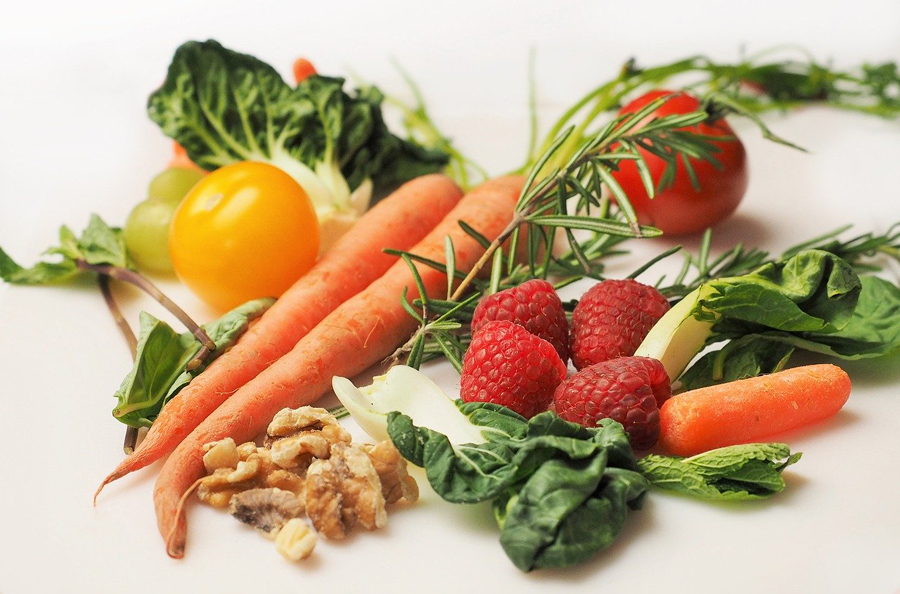 “We know only too well that what we are doing is nothing more than a drop in the ocean. But if the drop were not there, the ocean would be missing something.”
“We know only too well that what we are doing is nothing more than a drop in the ocean. But if the drop were not there, the ocean would be missing something.”
―
“The Wisconsin School Phenomenon: Impact of fresh, healthy foods on learning and behaviour” https://youtu.be/LgabV3Ktgww The video is older but the message is still relevant and powerful.
In 1997 the Wisconsin School District started an experiment, introducing wholesome, preservative-free nutrition for their students. Prior to the program the school was plagued with students dropping out and violence that required an on-staff police officer. After the introduction of the program, in a yearly survey required to be completed by schools, the school scored zero in the following five categories: dropouts – expulsions- drugs weapons and suicide. Out of 4,500 high school aged students only 16 (!) dropped out.
Why is it that nutrition is still not being given the attention and credit it deserves? We know the facts about the effects on overall health, learning ability and behaviour? How can children be expected to function properly in schools when they have no breakfast, reach for candy bars and fast foods during the day?…. If anything we put into our mouth/body does not provide the building blocks for the body to regenerate healthy cells, it should not be considered food. I wonder where the term “health food” comes from.
I strongly believe, that we owe it to our children (and ourselves of course) to provide them with the best foundation possible to succeed in life. Yet, society has the tendency to turn a blind eye to so many important facts. I encourage you to be strong, set an example for others and in this way, leave a positive footprint and make it easier for others to follow.
Green blessings,
Gudrun
ELDERBERRY SYRUP
Elderberry syrup is a delicious and healthy way to support your IMMUNE SYSTEM. One of its additional great benefits is its ANTI-CATARRHAL action. This means it helps to prevent mucous formation and aids in the removal of excess mucous. This is especially useful at this time of the year, when so many of us are dealing with colds, runny noses and coughs, all of which are accompanied by an excess of mucous production.
Elderberry syrup is safe for children and can be taken straight, added to soda water, smoothies, beverages, ice cream, yogurt etc.
There are still a few bottles of high quality Elderberry syrup (some with added Ginger) available at my office.
ACTIONS:
Immune System Support/Stimulant – Anti-Viral – Anti-catarrhal – Anti-Inflammatory
INDICATIONS:
Colds – Flu – Fever (reduces symptoms and duration) – Upper Respiratory Infections – Allergies – Urinary Tract Infections
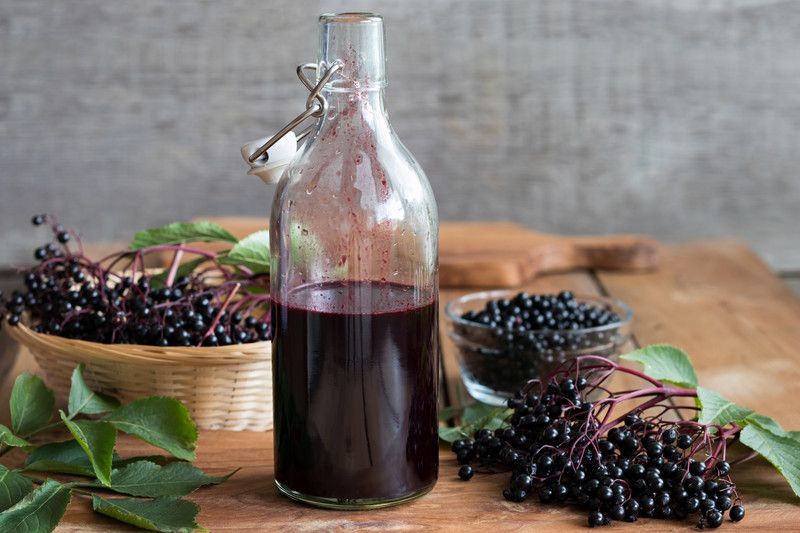
ROSEHIP HARVEST in NOVEMBER
 It is truly a gift from nature. Typically I like to go out right after the first frost but this year I was not able to fit it into my busy schedule. I will make a delicious Rosehip with my harvest and enjoy some of them in a tea.
It is truly a gift from nature. Typically I like to go out right after the first frost but this year I was not able to fit it into my busy schedule. I will make a delicious Rosehip with my harvest and enjoy some of them in a tea.
ROSEHIP SYRUP
In herbal medicine, syrups refer to a form of herbal preparation that preserve the herbs using a sweet medium such as honey. There are many ways to prepare syrups but the following is my favourite for rosehips.
Ingredients
– 1 part Rosehips
– 4-6 parts water (using less water will produce a thicker syrup; rosehips absorb a lot of water)
– Honey
– Brandy (as a preservative)
Directions
– Combine rosehips with water
– Simmer over low heat until you have half the liquid left; in order to increase the extraction of the juice from the rosehips use a potato masher to create a pulp
– Strain the liquid through a sieve first, followed by straining through muslin or cheese cloth. Any particles left in the liquid increase the risk of fermentation and spoilage. It is recommended to use a clean and moist cloth because the moisture will help to trap smaller particles including dust.
– Pour liquid back into pot, bring to simmer over low heat
– Add honey to liquid (i.e. for 1 cup liquid add 1/2 to 1 cup honey) and stir until dissolved
– Remove from heat
– Add Brandy, 1 tablespoon (15ml) for every cup of syrup as a preservative
– Bottle in clean, sterilized jars
– Label and date bottles (ALWAYS label to avoid the creation of what I call “mystery products”)
– ENJOY – for yourself or as a great gift!
Green blessings,
Gudrun
Did you know that CORN SILK has medicinal properties?
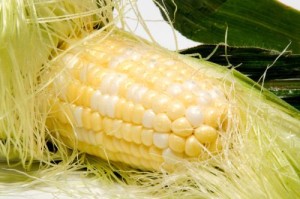 The “beard” of corn on the cob is called CORN SILK. If you want to use it for medicinal purposes I suggest you only use the silk from organic corn. Corn Silk is easy to dry for later use. Just spread it out on a mosquito screen, in a basket etc. and within a few days it should be well dried. Store it in a sealed glass jar away from the sun for future use in form of a tea or make a tincture.
The “beard” of corn on the cob is called CORN SILK. If you want to use it for medicinal purposes I suggest you only use the silk from organic corn. Corn Silk is easy to dry for later use. Just spread it out on a mosquito screen, in a basket etc. and within a few days it should be well dried. Store it in a sealed glass jar away from the sun for future use in form of a tea or make a tincture.
MEDICINAL USE: As a soothing anti-inflammatory its primary focus is the urinary system. It can be applied in urinary tract infections, kidney stones and bed wetting formulas for children. Some research suggests that corn silk also promotes bile flow.
SPROUTING PART 2 – HOW TO SPROUT YOUR OWN SEEDS
For an actual demonstration on how to sprout check out my DVD, “Herbal Pharmacy for Everyone” visit http://herbalinstructions.com/
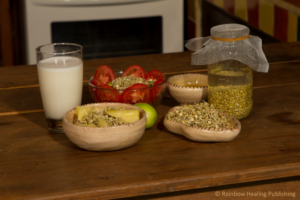 EQUIPMENT REQUIRED
EQUIPMENT REQUIRED
➣ A glass jar, any size from about 1 litre to 4 litres will do; wide mouth jars are the most practical
➣ Nylon mosquito screen, big enough to cover the opening of the jar and rubber band to secure it
➣ Fresh water
➣ Seeds for sprouting
a. I suggest you begin, using only one type of seed per jar. Once you have gained some experience, have fun experimenting, creating your own special mixes.
b. How many seeds to use? As the seeds absorb the water and begin to sprout, they will expand; different seeds will expand to different degrees. For example, radish seeds will expand more than sunflower seeds.
As a rule, fill the jar up to 1-2 cm with dried seeds. Using too few or too many, does not matter. You will learn quickly the proper amounts for the different types of seed you use.
INSTRUCTIONS
1. CLEANING
A. Place seeds in (wide mouth) glass jar; when using larger seeds like peas use more seeds
B. Cover jar with mesh and secure with rubber band
C. Rinse by adding water, swirl and drain
2. SOAKING
A. Add cool water, 5 – 10 cm above seeds and let sit 4 – 8 hours or over-night;
NOTE: The length of time for soaking the seeds depends on the type of seed used; check internet for soaking charts or refer to my next post.
B. Drain water, rinse and drain water again. Seeds should be damp but not “swimming” in water.
3. GROWING
A. Invert and prop jar at an angle in a bowl so that excess water can drain; preferably keep in dark place.
B. Twice a day rinse seeds with cool/room temperature water, swirl jar gently, drain and repeat step 3A.
C. Depending on the seeds, it will take 2 – 5 days for the seeds to sprout to a length of ½ – 5 cm when they are ready to be enjoyed.
4. EATING & STORING
Eat sprouts right away or store them in the fridge in a glass container or plastic bag. Treat them like you would any other food that can spoil.
Meal Suggestions
Sprouts can be added to salads, sandwiches, tacos, wraps, soups (just before serving), spaghetti sauce, omelets, green drinks and baking (1/2 cup of sprouts per loaf; add to liquid ingredients). Sprouted seeds may also be sautéed, blanched or steamed.
Sprouting beans will soften them enough, making them suitable for creating spreads such as hummus.
BE CREATIVE and most of all ENJOY!
To order the DVD “Herbal Pharmacy for Everyone – A Step-by-Step Guide to Creating You Own Herbal Preparations”, visit http://herbalinstructions.com/order-dvd/
SPROUTING YOUR OWN SEEDS – WHY & HOW
Heading into the fall and winter seasons it is good to know that, even in the north, we can still grow some of our own food, packed with vitality and nutrients, helping to fend off those pesky colds and flus that are certain to make their come back.
PART 1 – WHY TO SPROUT YOUR OWN SEEDS
Today’s post covers WHY to sprout. In the following posts I will provide specific instructions plus additional information.
Why Sprout?
Sprouting is a great way of adding high quality nutrition to your daily life. Sprouts are the only food source that is still alive when we eat it. The process is easy and can be done by anyone with supplies found in every home kitchen. No extra space is required, even the smallest kitchen will do. Sprouting is very economical and therefore is suitable for any budget.
Any seeds and nuts can be used for sprouting; however, it is best to use certified organic seeds and only those that are intended as food crop rather than farm planting seeds. This minimizes the risk of contamination.
To my knowledge, organic sprouting seeds have not been implicated in any outbreak of food poisoning.
Sprouts contain the highest concentration of phytonutrients per calorie of any food. Phytonutrients provide a great spectrum of health benefits.
Benefits of Eating Sprouts
➣ Great source of nutrition; sprouts are rich in vitamins, minerals, proteins and enzymes
➣ Support and nourishment for the entire body including immune system and cardio vascular health
➣ Very easily digested and assimilated
➣ Improvement of the efficiency of the digestive system
➣ Protection against free radical damage
➣ Very inexpensive
➣ Available year-round even when other vegetables and fruits are not available
➣ Easy to grow at home
➣ Great variety of usages
➣ Plus lots more
Commonly Used Seeds for Sprouting
Alfalfa – Beans (various) – Broccoli – Chia – Chickpeas – Fenugreek – Lentils – Mustard – Peas – Pumpkin – Radish – Red Clover – Sunflower
NOTE: Most seeds and nuts can be used for sprouting but some may require more equipment and experience than the ones mentioned above.
Avoid sprouting seeds from plants that have poisonous parts.
You can save some of your garden seeds and use them for sprouting i.e. radish, caragana seeds
STAY TUNED for next week’s post on HOW to sprout.

HEMP HEARTS – BEST SOURCE OF PROTEIN
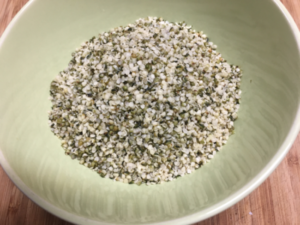 Hemp Hearts (shelled hemp seeds) are the best source of protein, essential fats — rich in Omega — vitamins and enzymes on the Earth. Rocky Mountain Hemp Hearts contain twice as much protein compared to other kinds.
Hemp Hearts (shelled hemp seeds) are the best source of protein, essential fats — rich in Omega — vitamins and enzymes on the Earth. Rocky Mountain Hemp Hearts contain twice as much protein compared to other kinds.
Rocky Mountain Hemp Hearts are grown without herbicides or pesticides. The products are made fresh daily, priced to sell quickly and shipped in small lots. They contain a natural antioxidant (Vitamin E) that keeps them fresh for many months at room temperature. Nothing has been added to the Hemp Hearts from Rocky Mountain. Nothing has been removed but the shell. The list of health benefits is almost endless – both for healthy individuals and those dealing with (chronic) health issues.
Hemp Hearts compared to other foods:
– contain more amino acids than milk, eggs or meat
– complete source of protein
– contain about 47% oil, 86% of which is omega 3, 6 and 9
– contain all essential fatty acids required for health
– provide plenty of energy without the use of sugar, caffeine etc.
– suitable for anyone unable to digest gluten, dairy, nuts, meat and sugar
– perfect for those avoiding carbohydrates
– supports and encourages proper bowel function
Hemp Hearts can be enjoyed in cereal, salads, baked goods, added to sauces, mixed with yogurt and fruit…
I strongly recommend to make Hemp Hearts part of your daily health giving regime!
Green Blessings,
Gudrun
The Magic of Mother Earth
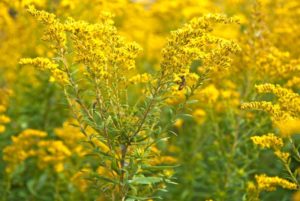 The abundance and beauty of the Earth at this time of the year in the Peace Country is amazing. I encourage you to bring some of the magic of Mother Earth into your home by adding the wild greens to your food, preparing a cup of tea with fresh plants or harvesting and drying herbs for later use. Goldenrod is one of those amazing herbs you can see everywhere right now.
The abundance and beauty of the Earth at this time of the year in the Peace Country is amazing. I encourage you to bring some of the magic of Mother Earth into your home by adding the wild greens to your food, preparing a cup of tea with fresh plants or harvesting and drying herbs for later use. Goldenrod is one of those amazing herbs you can see everywhere right now.
Goldenrod is a fairly tall plant with beautiful, vibrant golden-yellow flowers. You will find it in dry woodlands, forest clearings and roadsides.
The Latin name Solidago originates from “solidus” & “ago,” Solidus, meaning “healthy and strong,” and ago meaning “to make whole.” Both of these terms refer to the plant’s ability to heal wounds.
Some common names for Goldenrod from various cultures also give an indication for its medicinal use as a wound healing herb, for example in Germany the herb is often called “Fastening Herb”. In fact in ancient German history Goldenrod was gathered as a wound herb before engaging in battle, just in case it was needed.
However, the focus today for its use has shifted from a wound healing aid, to a very reliable herb to support the kidneys. It promotes the elimination of urine and is applied for acute as well as chronic conditions of the kidneys and bladder including inflammation. In addition, it has been found to support the body during times of upper respiratory infections, especially when dealing with a chronic situation.
For medicinal purposes the leaves and flowers (early flowering stage) are being harvested and may be used fresh or dried. The fresh leaves and flowers can be used for wound healing or made into a tea, which can also be used as a wound wash. The dried herb may be used in the form of a tea as well but also as a tincture. A tincture is an alcoholic extract of a plant and is more concentrated than an herbal tea. The “crafty” person might want to try to use the flowers as a natural dye.
This summer Goldenrod has been brightening up the landscape in so many places and the quality of it has been superb. Many times you will find it being “infested” with many small bugs, but this year the only insects I have watched enjoying the bright, yellow flowers are butterflies and bees!
If you are not sure how to prepare the herbs, remember that the DVD Herbal Pharmacy for Everyone provides clear and easy to follow instructions, teaching a great variety of herbal preparations. Check my website www.herbalinstructions.com for more information.
Disclaimer
This information is not intended for the use of diagnosing any disease, condition or prescribing any treatment whatsoever. The use of any of the herbs and preparations is the sole responsibility of each individual and does not replace the services and advice of a medical practitioner and qualified healthcare provider. Consult a qualified healthcare professional before making medical decisions or if you have questions about your individual medical situation. No responsibility is assumed should the information be used in place of a licensed medical practitioner’s services.



Follow Us!